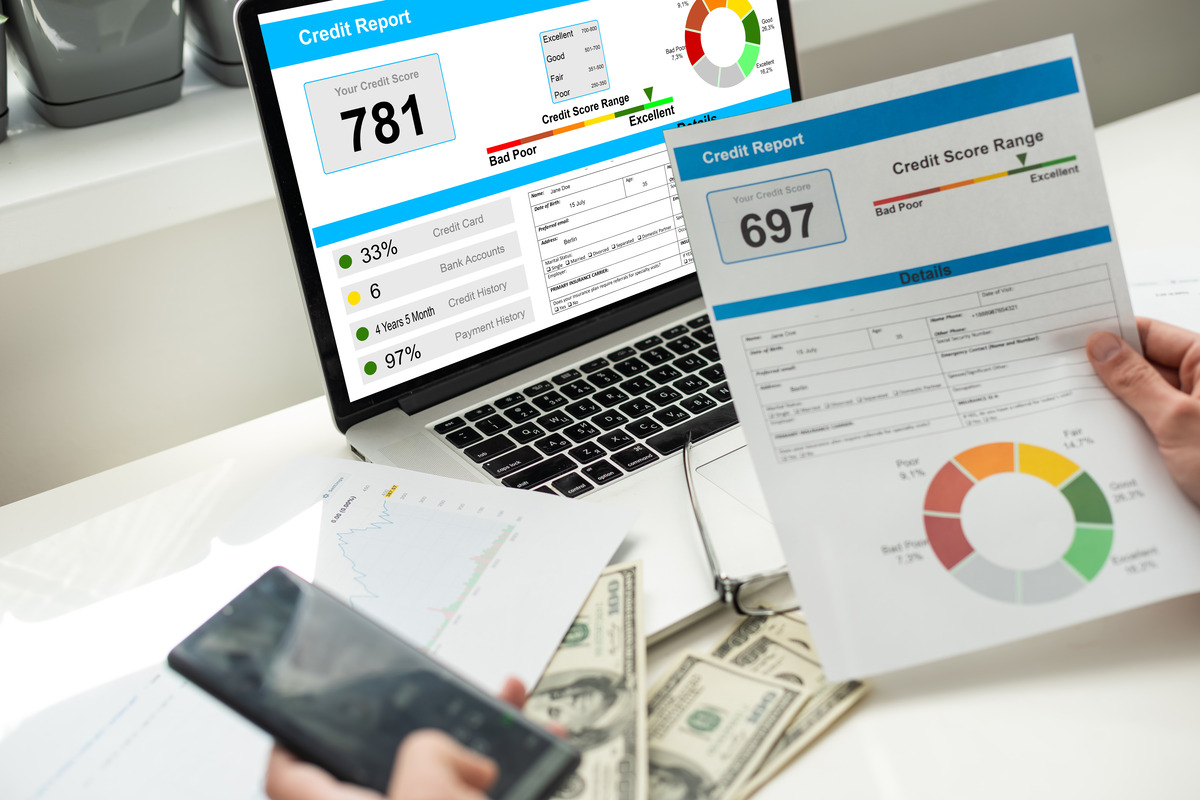Understanding credit score ranges is key to securing competitive interest rates on loans, credit cards, and other financial products. Your credit score, a three-digit number between 300 and 850, reflects your creditworthiness and plays a major role in the terms lenders offer you. This article breaks down the credit score ranges, explains what each means, and identifies the score you need for a competitive rate. With this knowledge, you’ll know where you stand and how to improve your score for better financial opportunities.
What Are Credit Score Ranges?
Credit scores typically span from 300 to 850, with higher scores signaling greater creditworthiness. The most widely used models, FICO and VantageScore, both follow this scale. Here’s how the ranges are generally categorized:
- Excellent: 800–850
- Very Good: 740–799
- Good: 670–739
- Fair: 580–669
- Poor: 300–579
Each range indicates a different level of risk to lenders. Higher scores suggest lower risk, often leading to better loan terms and lower interest rates, while lower scores may result in higher costs or limited access to credit.
Why Credit Score Ranges Matter
Your credit score range directly influences the interest rates and loan terms you’re offered. Lenders use these ranges to gauge how risky it is to lend to you. Here’s what you can expect:
- Excellent Credit (800–850): Borrowers here often secure the lowest rates, saving significant amounts over time.
- Very Good Credit (740–799): You’ll get highly competitive rates, just shy of the best available.
- Good Credit (670–739): Rates are still favorable, though higher than those for top-tier scores.
- Fair Credit (580–669): Expect higher rates, and some lenders may impose stricter conditions like larger down payments.
- Poor Credit (300–579): Qualifying for loans can be tough, and rates, if approved, will be much higher.
Knowing your range helps you anticipate lender responses and plan improvements if needed.
What Credit Score Do You Need for a Competitive Rate?
To land a competitive interest rate, you generally need a credit score of 700 or higher. However, the very best rates often require a score of 740 or above. Here’s a detailed look:
- 700–739 (Good): You’ll qualify for solid rates, though not the lowest available.
- 740–799 (Very Good): This range unlocks highly competitive rates and excellent terms.
- 800+ (Excellent): You’re in prime position for the best rates and conditions lenders offer.
For example, consider a $200,000, 30-year mortgage:
- At a 760 score, you might get a 3.5% rate, with a monthly payment of $898.
- At a 680 score, the rate could rise to 4.0%, increasing the payment to $955. Over 30 years, that 0.5% difference adds up to more than $20,000 in extra interest.
Factors That Shape Your Credit Score
Several factors determine where your score falls within these ranges:
- Payment History (35%): Paying bills on time is the biggest contributor.
- Credit Utilization (30%): The ratio of your credit card balances to limits—lower is better.
- Length of Credit History (15%): Longer histories boost your score.
- New Credit (10%): Frequent applications can lower your score temporarily.
- Credit Mix (10%): A variety of credit types (e.g., mortgage, credit cards) can help.
Understanding these can guide your efforts to improve your score.
How to Improve Your Credit Score
If your score falls short of the 700+ mark, here are actionable steps to climb into a higher range:
- Pay Bills on Time: Late payments hurt most. Use reminders or autopay to stay consistent.
- Lower Credit Utilization: Pay down balances to keep usage below 30% of your credit limits.
- Avoid Excessive Applications: Limit new credit inquiries, as each can ding your score slightly.
- Keep Old Accounts Open: Closing them shortens your credit history, which can lower your score.
- Monitor Your Credit Report: Check for errors annually (via AnnualCreditReport.com) and dispute inaccuracies.
Consistent effort in these areas can steadily lift your score, opening doors to better rates.
Real-World Impact of a Higher Score
A higher credit score doesn’t just mean lower rates—it translates to real savings. Beyond the mortgage example, consider a $20,000 auto loan over 5 years:
- At 740+, you might get a 4% rate, paying $375 monthly.
- At 620, the rate could jump to 10%, raising the payment to $425. That’s $3,000 more in interest over the loan term.
Conclusion
Credit score ranges are a roadmap to understanding your financial standing with lenders. For competitive rates, target a score of at least 700, with 740 or higher unlocking the best deals. If you’re below that threshold, focus on timely payments, debt reduction, and smart credit management. Over time, these habits can elevate your score, paving the way for significant savings and stronger financial health.
